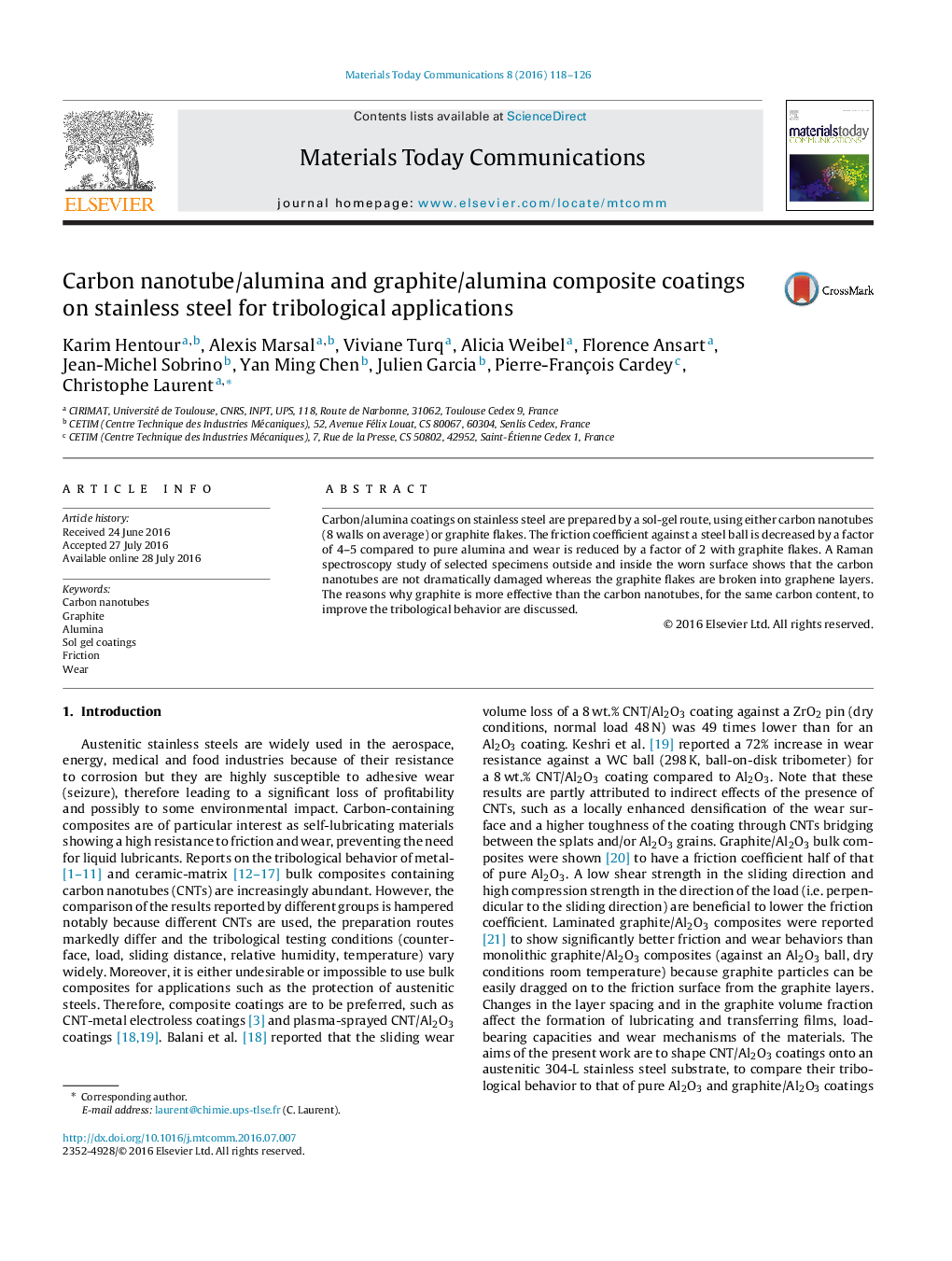| Article ID | Journal | Published Year | Pages | File Type |
|---|---|---|---|---|
| 1586180 | Materials Today Communications | 2016 | 9 Pages |
•Carbon/alumina coatings on steel using either carbon nanotubes or graphite flakes.•Friction coefficient reduced by 4–5 (wear by 2) compared to alumina coating.•Graphite more efficient than CNTs because easily transformed into graphene layers.•Only the outer wall (out of 8) of CNTs contributes to the sliding.•The total available carbon surface area in the specimen is the relevant parameter.
Carbon/alumina coatings on stainless steel are prepared by a sol-gel route, using either carbon nanotubes (8 walls on average) or graphite flakes. The friction coefficient against a steel ball is decreased by a factor of 4–5 compared to pure alumina and wear is reduced by a factor of 2 with graphite flakes. A Raman spectroscopy study of selected specimens outside and inside the worn surface shows that the carbon nanotubes are not dramatically damaged whereas the graphite flakes are broken into graphene layers. The reasons why graphite is more effective than the carbon nanotubes, for the same carbon content, to improve the tribological behavior are discussed.
Graphical abstractFigure optionsDownload full-size imageDownload as PowerPoint slide
